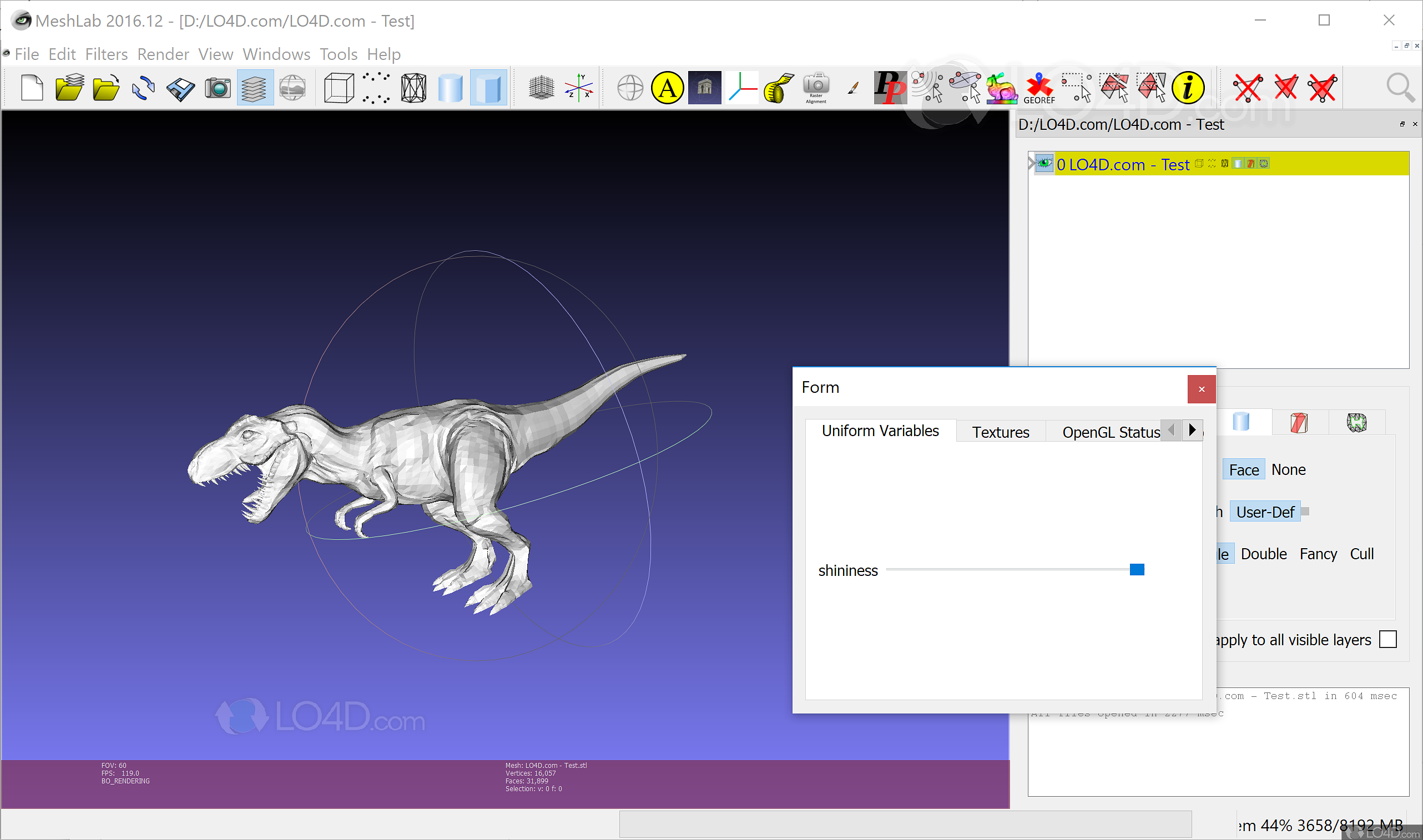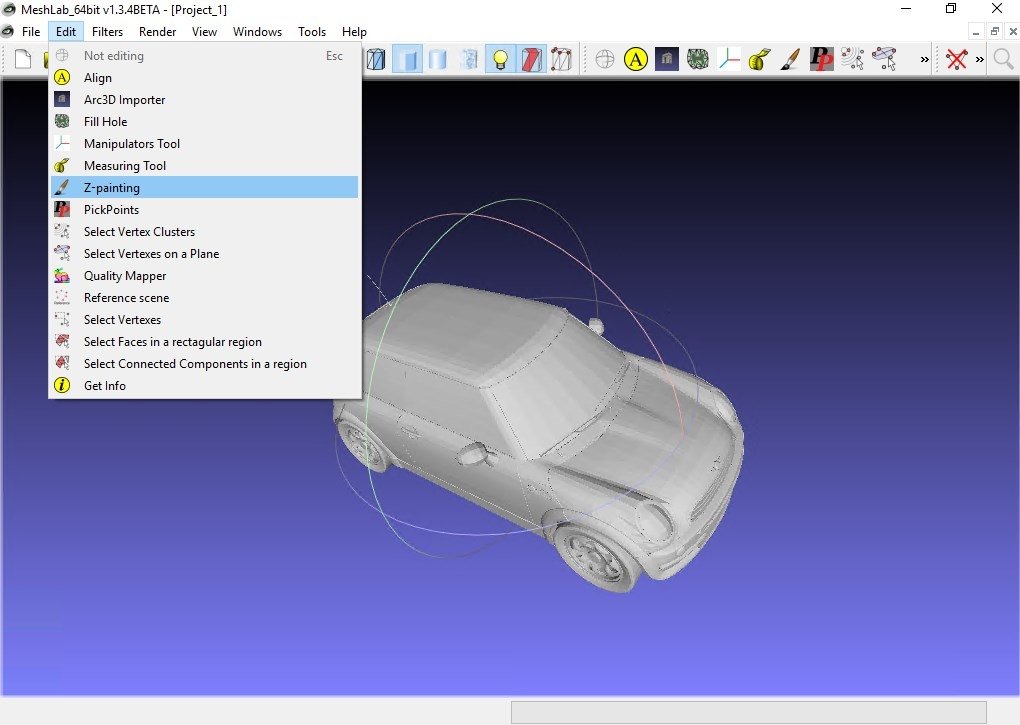

Ochre Depth and Solver Divide indicate the precision of the reconstructions.Converting Step 3:Surface reconstructionĬlick Filters > Remeshing, Simplification and Reconstruction > Surface Reconstruction: Poisson (Newer version please choose: Screened Poisson Surface Reconstruction), enter 13 at "Ochre Depth" and "Solver Divide", 1 at "Samples Per Node", 0.7 at "Surface Offset",click Apply. Converting Step 2:Calculate the surface normal vectorĬlick Filters > Point Set > Compute normals for point sets,enter 12 at "Neighbor num" and 1 at "Smooth Iteration", click Apply (You will still see only minor changes).Ħ. Drag the ASC file in and uncheck Grid Triangulation (very important!)Ĭlick Filters > Sampling > Cluster Vertex Subsampling, enter 0.8 at the "perc on" column and click Apply (You will see minor changes).ĥ. Right click on the point cloud and "Export ASC", use Meshlab to covert the file to a mesh model. For now, users can export the point clouds to ASC files with the 0.6.1 version. We will apply Meshlab's algorithm to FLUX Studio in the future.
#Meshlab center mesh download
if you're interest in this model, you can download the file in the attachments. The result below was scanned with normal quality (~10 mins), calibrated and a backlight environment. The object should be dark like shown in the picture below.

A simple way to make a backlight environment, place a powerful light (like a lamp) behind FLUX Delta. With the right lights and the clear point cloud, we can continue to the next step: surface reconstruction.Īfter testing out different lightings, backlight turns out to be the best. The red lines will not be ideal When the lighting is too much or not enough, please see the images below: Let's repeat: The clearer the red lines are, the better the point clouds will be. If you see "Calibration tool not detected" in the software, please make sure the lighting is enough, and the calibration tool is facing the camera at a 45 ° angle. The two lasers should be parallel under the manufacture standard of FLUX Delta, however, the laser heads might be moved during delivery, so please adjust the lasers with a screwdriver until they are parallel again.Ģ. Open FLUX Studio, click Devices > Commands > Turn on scanning laser, and place the calibration tool in the middle of the scanning platform. When first using the scannin feaure, if you find there are 2 layers that didn't overlap, please calibrate through the following steps.ġ. Objects with more convex, matte surfaces are more likely to be scanned. We'd advise that you restart the scanning for better results. If there are changes to the environment (someone walks by causing shadows, light changes), the scanning process will be interfered.


The clearer the red lines are, the better the point clouds will be. The computer will measure the relative position of an object's surface with the red scanning lines by subtracting the pictures of the object with laser and without. Here are some scanning tips, please follow the steps and you should get better results with our 3D scanning feature. Clear point clouds makes a better mesh model. Surface Reconstruction: Convert a point cloud to a 3D surface. Create Point Clouds: The scanning device measures a large number of points ( X, Y, Z coordinates) on an object's surface, and outputs the point cloud as a data file.Ģ. Scanning can be roughly categorized into 2 steps:ġ.


 0 kommentar(er)
0 kommentar(er)
